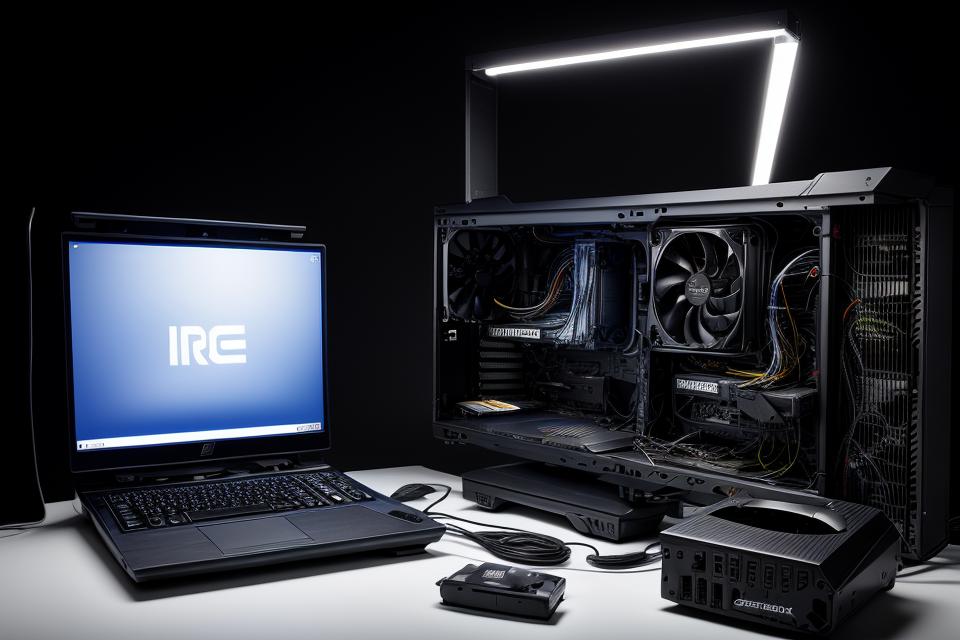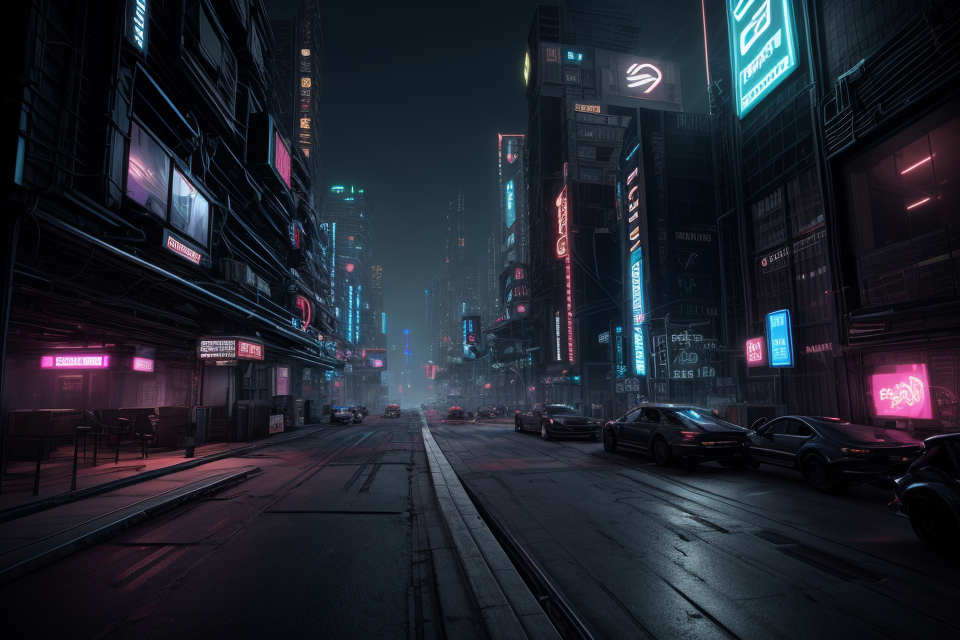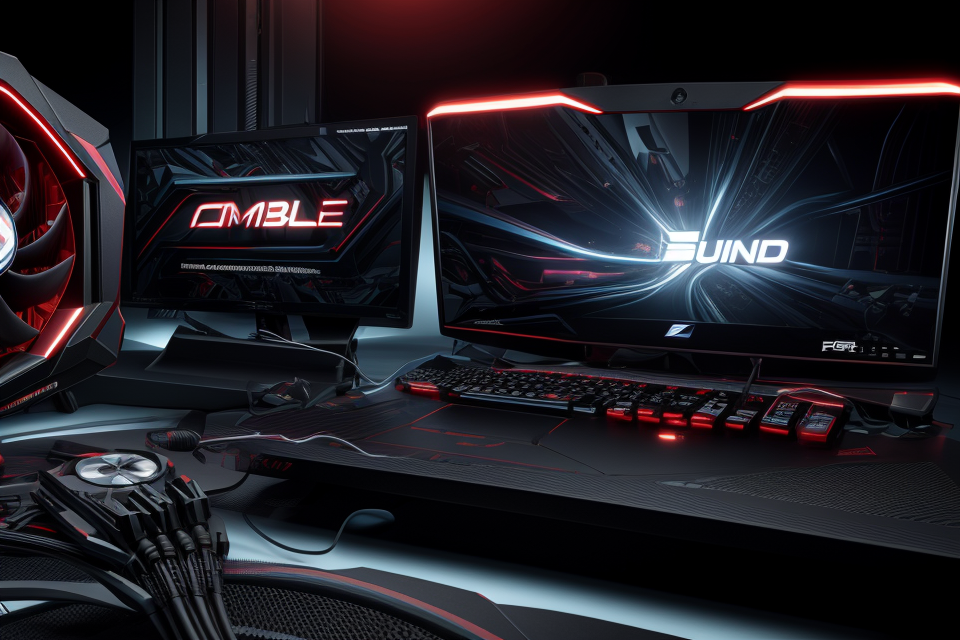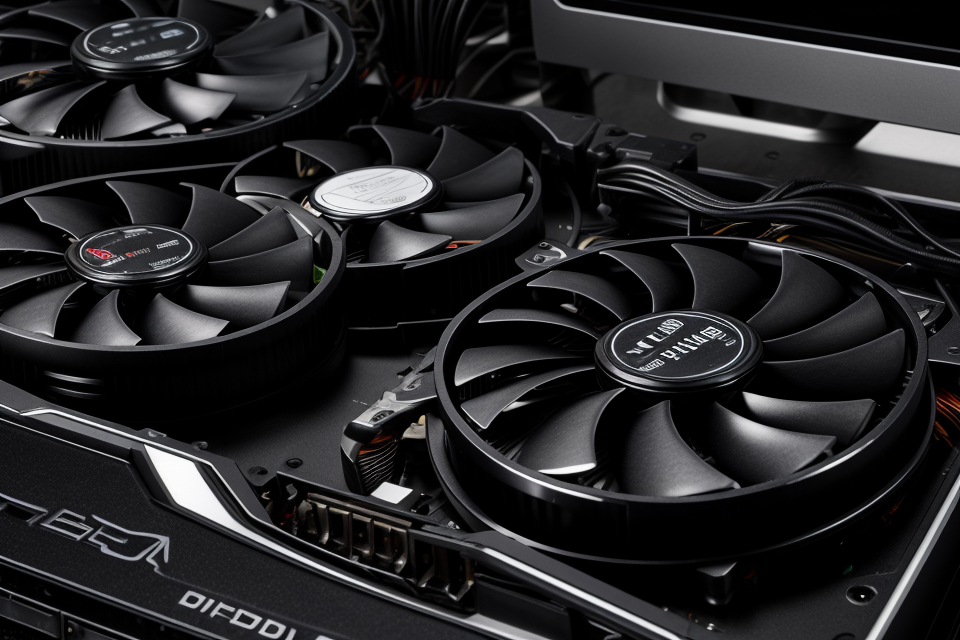
Are you experiencing issues with your graphics card? If so, you may be wondering if it’s a faulty component or something else entirely. In this article, we’ll explore the question of whether a graphics card can be faulty and what steps you can take to troubleshoot any issues that may arise. From power supply problems to software conflicts, we’ll cover all the bases to help you get your graphics card back up and running smoothly. So, let’s dive in and explore the world of graphics card troubleshooting!
Signs of a Faulty Graphics Card
Display Issues
When it comes to identifying a faulty graphics card, display issues are some of the most common and obvious signs. These issues can range from minor distortions or blurriness to more severe problems like uneven lines, missing pixels, or even a complete black or white screen.
Distorted or Blurry Graphics
One of the most common display issues associated with a faulty graphics card is distorted or blurry graphics. This can occur when the graphics card is unable to properly process the visual information, resulting in a blurred or stretched image. In some cases, this issue may be temporary and can be resolved by restarting the computer or updating the graphics driver. However, if the problem persists, it may be a sign of a more serious issue with the graphics card.
Uneven Lines or Missing Pixels
Another common display issue is uneven lines or missing pixels. This can occur when the graphics card is unable to properly render certain areas of the screen, resulting in uneven lines or missing pixels. This issue can be particularly noticeable when playing video games or using graphically intensive applications.
Black or White Screen
In some cases, a faulty graphics card may cause the screen to become completely black or white. This can occur when the graphics card is unable to properly process the visual information, resulting in a complete loss of image. In some cases, this issue may be temporary and can be resolved by restarting the computer or updating the graphics driver. However, if the problem persists, it may be a sign of a more serious issue with the graphics card.
It’s important to note that display issues can also be caused by other factors, such as a malfunctioning monitor or outdated graphics driver. Therefore, it’s important to thoroughly troubleshoot the issue before concluding that the graphics card is faulty.
Performance Issues
When a graphics card is faulty, it can manifest in various ways that affect the overall performance of the system. Here are some signs of a faulty graphics card related to performance issues:
- Slow or laggy graphics: A faulty graphics card may not be able to render images and videos smoothly, resulting in slow or laggy graphics. This can be especially noticeable during gaming or while using resource-intensive applications.
- Inability to run certain games or applications: If a graphics card is faulty, it may not be able to handle certain games or applications that require high levels of graphics processing. This can result in errors, crashes, or the inability to run the application at all.
- High system temperature: A faulty graphics card can cause the system temperature to rise, which can lead to system instability and crashes. This is because the graphics card may be consuming more power than it should, causing the system to overheat.
In conclusion, if you are experiencing performance issues with your graphics card, it may be an indication of a faulty card. It is important to troubleshoot the issue to determine the root cause and find a solution before it causes further damage to the system.
Audio Issues
A faulty graphics card can manifest itself in various ways, one of which is audio issues. When a graphics card is malfunctioning, it can cause crackling or popping sounds in the audio output. This is often accompanied by a lack of sound altogether. In some cases, the audio may work intermittently, but this is still an indication of a problem with the graphics card.
The crackling or popping sounds can be caused by a number of factors, including a lack of proper ventilation or a buildup of dust and debris inside the card. Overheating can also cause the card to malfunction and produce strange noises. If the graphics card is failing altogether, it may not provide any audio output at all.
In some cases, the audio issues may be accompanied by other problems, such as visual artifacts or crashes. This is because the graphics card is responsible for producing both the audio and visual output, so a failure in one area can impact the other. If you are experiencing any of these issues, it is likely that there is a problem with your graphics card.
If you suspect that your graphics card is experiencing audio issues, the first step is to test it with a different audio device. This can help determine whether the problem is with the graphics card or with the audio output itself. If the problem persists with a different device, it is likely that the graphics card is faulty and needs to be replaced.
In conclusion, audio issues can be a sign of a faulty graphics card. Crackling or popping sounds, as well as a lack of audio output altogether, are indications that there may be a problem with the card. If you are experiencing these issues, it is important to test the card with a different audio device and potentially seek a replacement if the problem persists.
Causes of Graphics Card Failure
Overheating
Overheating is a common cause of graphics card failure. When a graphics card becomes too hot, it can malfunction or even become permanently damaged. There are several reasons why a graphics card may overheat:
- Insufficient cooling: If the graphics card is not getting enough airflow, it can overheat. This can happen if the case fans are not functioning properly or if the card is being obstructed by other components.
- Dust buildup: Over time, dust and debris can accumulate on the graphics card, reducing airflow and causing the card to overheat.
- Faulty fan: If one of the fans on the graphics card is not working properly, it can cause the card to overheat.
It is important to address these issues as soon as possible to prevent damage to the graphics card. If a graphics card becomes too hot, it can cause display issues, system crashes, and other problems. To prevent overheating, it is important to ensure that the card is getting enough airflow and that the fans are functioning properly.
Power Supply Issues
A graphics card is a critical component of a computer system, and its failure can lead to system crashes, display issues, and other problems. One of the primary causes of graphics card failure is related to power supply issues. These issues can be caused by several factors, including insufficient power supply, faulty power supply, and damaged power connector.
- Insufficient power supply: The graphics card requires a stable power supply to function correctly. If the power supply is not sufficient, it can cause the graphics card to fail. The power supply must be rated for the graphics card and must be able to provide the required wattage.
- Faulty power supply: A faulty power supply can also cause graphics card failure. If the power supply is not supplying the required power to the graphics card, it can cause the card to malfunction. It is essential to check the power supply and replace it if necessary.
- Damaged power connector: The power connector is responsible for connecting the graphics card to the power supply. If the power connector is damaged, it can cause the graphics card to fail. It is important to check the power connector and replace it if necessary.
In summary, power supply issues are a common cause of graphics card failure. It is essential to ensure that the power supply is sufficient, and the power connector is in good condition to prevent graphics card failure.
Driver Issues
- Outdated or corrupt drivers
- Graphics card drivers are responsible for communicating with the operating system and managing the graphics card’s functions. When these drivers are outdated or corrupt, they can cause issues with the graphics card’s performance, such as crashes, freezes, or display errors.
- To fix this issue, it is important to regularly update the graphics card drivers to the latest version available from the manufacturer’s website. Additionally, it is recommended to uninstall any previously installed drivers and use a clean installation process to ensure that all files are up-to-date and functioning properly.
- Incompatible graphics card and motherboard
- In some cases, the graphics card may not be compatible with the motherboard, resulting in issues such as display errors, black screens, or no output.
- To fix this issue, it is important to check the compatibility of the graphics card with the motherboard before purchasing. Additionally, some motherboards may require a specific graphics card BIOS version to function properly, so it is important to check the manufacturer’s website for any necessary updates.
- Conflicting software
- Other software programs on the computer can conflict with the graphics card, causing issues such as display errors, crashes, or freezes.
- To fix this issue, it is important to identify any conflicting software programs and either remove them or update them to the latest version. Additionally, it is recommended to check for any overlapping graphics settings in the operating system or software programs and ensure that they are set to the correct configuration.
How to Test Your Graphics Card
Basic Tests
When it comes to testing a graphics card, there are several basic tests that you can perform to determine if the issue lies with the graphics card itself. These tests are relatively simple and can help you diagnose any problems that may be occurring.
Checking for display issues
One of the first things you should do when testing a graphics card is to check for display issues. This can include anything from distorted images to no display at all. To check for display issues, you can simply connect a display to the graphics card and see if it works properly. If the display is not working correctly, it could be an indication that the graphics card is faulty.
Running a system stress test
Another basic test that you can perform is to run a system stress test. This can help you determine if the graphics card is working properly under load. To run a system stress test, you can use software such as FurMark or GPU-Z. These programs will put the graphics card through its paces and see how it performs under stress. If the graphics card is faulty, it may not be able to handle the stress test and will fail.
Checking for missing or incorrect hardware
It’s also important to check for missing or incorrect hardware when testing a graphics card. This can include anything from a missing graphics card to an incorrect display driver. To check for missing or incorrect hardware, you can simply ensure that all the necessary components are present and that they are properly installed. If any hardware is missing or incorrect, it could cause issues with the graphics card and affect its performance.
Advanced Tests
Running benchmarks
One of the most effective ways to test your graphics card is by running benchmarks. Benchmarks are programs that are designed to push your graphics card to its limits, and they can help you identify any issues that may be causing problems with your graphics card. Some popular benchmarking programs include 3DMark and Unigine Heaven.
To run a benchmark, you’ll need to download the program and install it on your computer. Once the program is installed, you can run the benchmark and let it run for several minutes to get an accurate reading of your graphics card’s performance.
Using diagnostic tools
Another way to test your graphics card is by using diagnostic tools. These tools can help you identify any issues that may be causing problems with your graphics card, such as overheating or faulty drivers. Some popular diagnostic tools include MSI Afterburner and GPU-Z.
To use a diagnostic tool, you’ll need to download the program and install it on your computer. Once the program is installed, you can run it to get an idea of your graphics card’s performance and identify any issues that may be causing problems.
Testing in safe mode
If you’re unable to run benchmarks or diagnostic tools, you can try testing your graphics card in safe mode. Safe mode is a troubleshooting mode that can help you identify any issues that may be causing problems with your graphics card.
To test your graphics card in safe mode, you’ll need to restart your computer and enter the BIOS settings. Once you’re in the BIOS settings, you can select the “safe mode” option and run a benchmark or diagnostic tool to identify any issues that may be causing problems with your graphics card.
Troubleshooting Steps
Update Drivers and Software
- Check for updates and install them
- Check the manufacturer’s website for the latest graphics card drivers and software updates.
- Ensure that all the drivers and software are up to date and compatible with your system.
- Install the updates following the manufacturer’s instructions.
- Disable unnecessary software and services
- Identify any unnecessary software or services running in the background that may be consuming system resources.
- Disable or remove any unnecessary programs that may be interfering with the graphics card’s performance.
- Ensure that the system is optimized for the graphics card to function properly.
- Reinstall graphics card drivers
- If the previous steps do not resolve the issue, try reinstalling the graphics card drivers.
- Follow the manufacturer’s instructions for uninstalling and reinstalling the drivers.
- Restart the computer after reinstalling the drivers to see if the issue has been resolved.
Clean and Reinstall Graphics Card
- Dust out the graphics card
Dust and debris can accumulate in the graphics card over time, causing it to overheat and malfunction. To remedy this, it is essential to periodically clean the graphics card. To do this, unplug the computer, remove the side panel of the case, and carefully blow compressed air into the graphics card slot to dislodge any dust or debris. It is crucial to be cautious when using compressed air to avoid damaging any components. - Check for any loose connections
Loose connections can also cause graphics card issues. Therefore, it is essential to check all connections between the graphics card and the motherboard to ensure they are secure. This can be done by gently pulling on the connection to check if it is secure or using a connection tester to verify that the connections are functioning correctly. - Reinstall the graphics card
If the above steps do not resolve the issue, the graphics card may need to be reinstalled. To do this, first, disconnect the power supply from the graphics card, then carefully remove the graphics card from the PCIe slot. Before reinstalling the graphics card, ensure that the PCIe slot is clean and free of any debris. Once the graphics card is removed, carefully inspect it for any signs of damage before reinstalling it in the PCIe slot.
It is essential to exercise caution when cleaning and reinstalling the graphics card to avoid any damage to the components. If the issue persists after completing these steps, it may be an indication of a more significant problem, and professional assistance may be required.
Check Power Supply
Checking the power supply is an essential step in troubleshooting graphics card issues. A graphics card requires a stable power supply to function correctly, and if the power supply is not sufficient or damaged, it can cause various issues, such as the graphics card not functioning, display issues, or system crashes. Here are some steps to check the power supply:
- Check for sufficient power supply: Ensure that the power supply is rated for the graphics card you are using. A power supply that is not sufficient for the graphics card can cause issues such as overheating, instability, and crashes. The power supply should be rated for at least 400W for a low-end graphics card and up to 850W for high-end graphics cards.
- Replace or repair damaged power supply: If the power supply is damaged, it can cause various issues with the graphics card. Check for any visible signs of damage, such as burns or bulges on the power supply. If you find any damage, replace the power supply immediately.
- Check for damaged power connectors: Ensure that all power connectors are securely connected to the graphics card and the power supply. Loose or damaged connectors can cause instability and crashes. If you find any damaged connectors, replace them immediately.
In summary, checking the power supply is an essential step in troubleshooting graphics card issues. Ensure that the power supply is rated for the graphics card, check for any visible signs of damage, and ensure that all power connectors are securely connected.
Seek Professional Help
When troubleshooting graphics card issues, seeking professional help can be an effective solution. This is especially true if you have tried all the DIY troubleshooting steps and the problem still persists. Here are some options to consider:
Contact the Manufacturer for Warranty Repairs
If your graphics card is still under warranty, contacting the manufacturer for repairs can be a good option. Most manufacturers offer a limited warranty that covers defects in materials and workmanship for a specified period of time. This can range from one to three years, depending on the manufacturer and the specific model of the graphics card.
To take advantage of this option, you will need to provide proof of purchase and a description of the issue you are experiencing. The manufacturer may then offer to repair or replace the graphics card at no cost to you.
Take the Computer to a Professional Repair Shop
Another option is to take the computer to a professional repair shop. These shops employ technicians who specialize in repairing computer hardware, including graphics cards. They can diagnose the issue and recommend the best course of action.
When choosing a repair shop, look for one that has experience with graphics card issues and has a good reputation in the community. It is also a good idea to get quotes from multiple shops before making a decision.
Check Online Forums for Solutions
Finally, you can check online forums for solutions to graphics card issues. These forums are filled with people who have experience with similar issues and may be able to provide helpful advice.
Some popular forums include Reddit’s r/pcmasterrace and Tom’s Hardware. Simply search for your specific issue and see what solutions others have found. You can also ask for help and advice from other users.
In conclusion, seeking professional help can be an effective solution when troubleshooting graphics card issues. Whether it’s contacting the manufacturer for warranty repairs, taking the computer to a professional repair shop, or checking online forums for solutions, there are many options available to help you resolve the issue.
FAQs
1. What is a graphics card?
A graphics card, also known as a video card or display card, is a hardware component that is responsible for rendering images and videos on a computer screen. It is an essential component for gaming, video editing, and other graphics-intensive applications.
2. How can I tell if my graphics card is faulty?
There are several signs that may indicate a faulty graphics card, including:
* Display issues: such as distorted or blurry images, ghosting, or artifacts.
* No display: if the graphics card is completely dead, the computer will not display anything on the screen.
* System crashes or freezes: a faulty graphics card can cause the system to crash or freeze during use.
* Noisy: If your graphics card is making unusual noises like buzzing or whining, it may be faulty.
3. What causes a graphics card to be faulty?
A graphics card can become faulty due to a variety of reasons, including:
* Overheating: if the graphics card becomes too hot, it can cause the components to fail.
* Dust: accumulation of dust on the graphics card can cause it to overheat and fail.
* Electrical issues: a faulty power supply or other electrical problems can cause the graphics card to malfunction.
* Manufacturing defects: sometimes, graphics cards can be faulty from the factory.
4. How do I fix a faulty graphics card?
If you suspect that your graphics card is faulty, you may need to replace it. Here are the steps to follow:
* Shut down and unplug your computer to prevent damage to the graphics card during removal.
* Open the case of your computer and locate the graphics card.
* Disconnect the power cable from the graphics card.
* Carefully remove the graphics card from the PCIe slot.
* Install the new graphics card and connect the power cable.
* Reassemble your computer and power it on to test the new graphics card.
5. How can I prevent a faulty graphics card?
To prevent a faulty graphics card, you can take the following precautions:
* Keep your computer clean and dust-free to prevent dust buildup on the graphics card.
* Use a reputable brand and model when purchasing a graphics card to minimize the risk of manufacturing defects.
* Keep your graphics card cool by ensuring proper airflow inside your computer case.
* Avoid overclocking your graphics card, as this can cause it to become unstable and fail.


